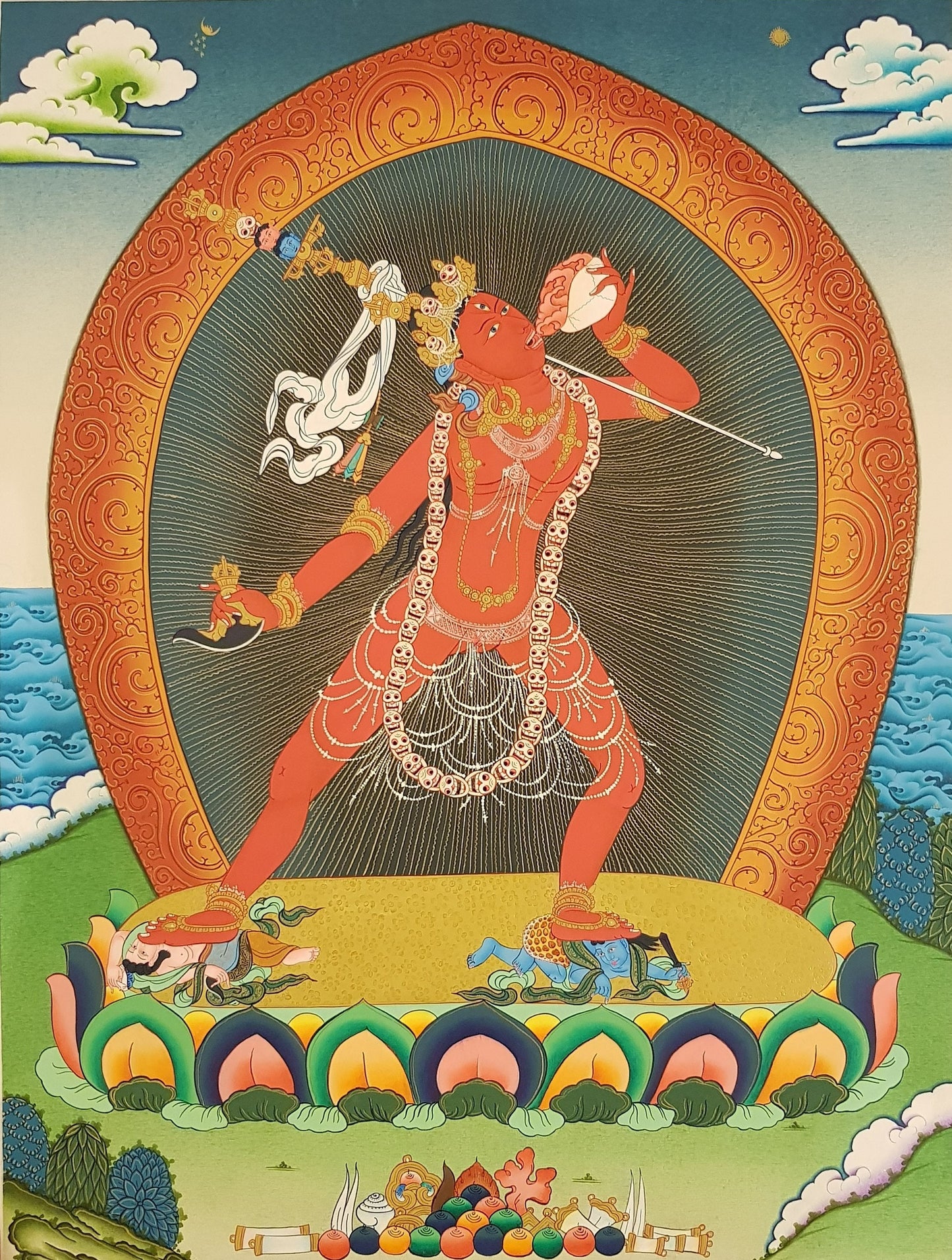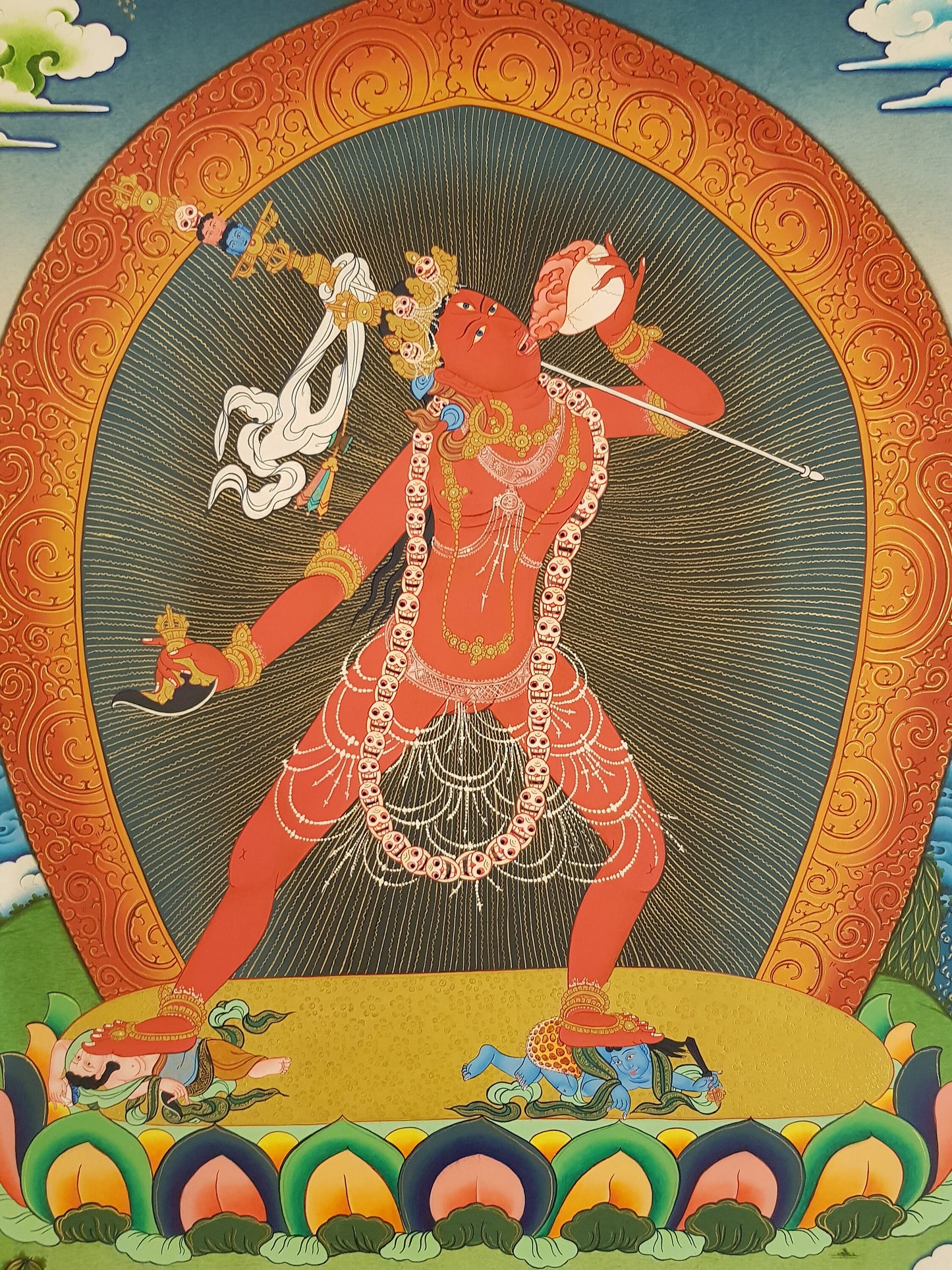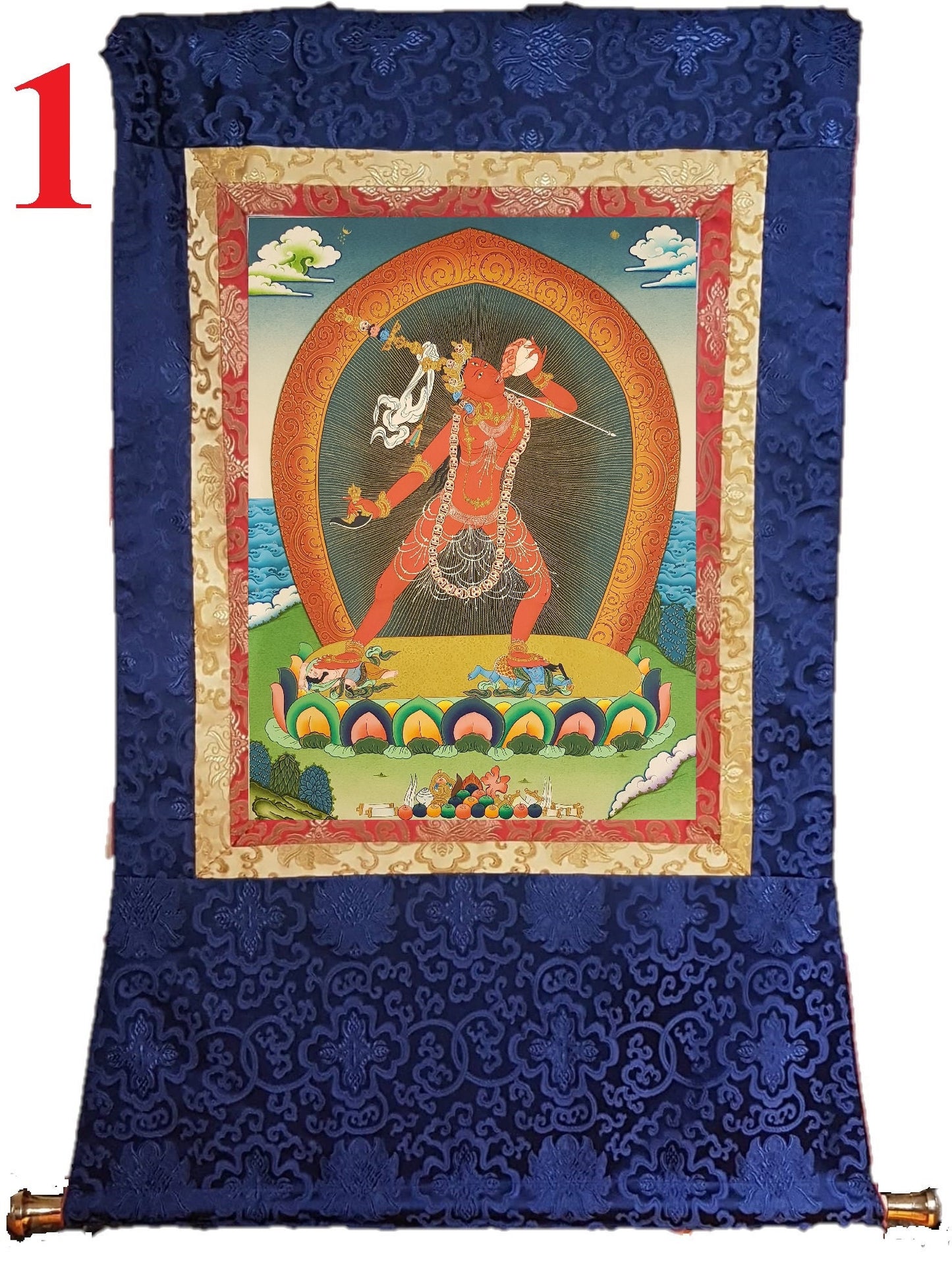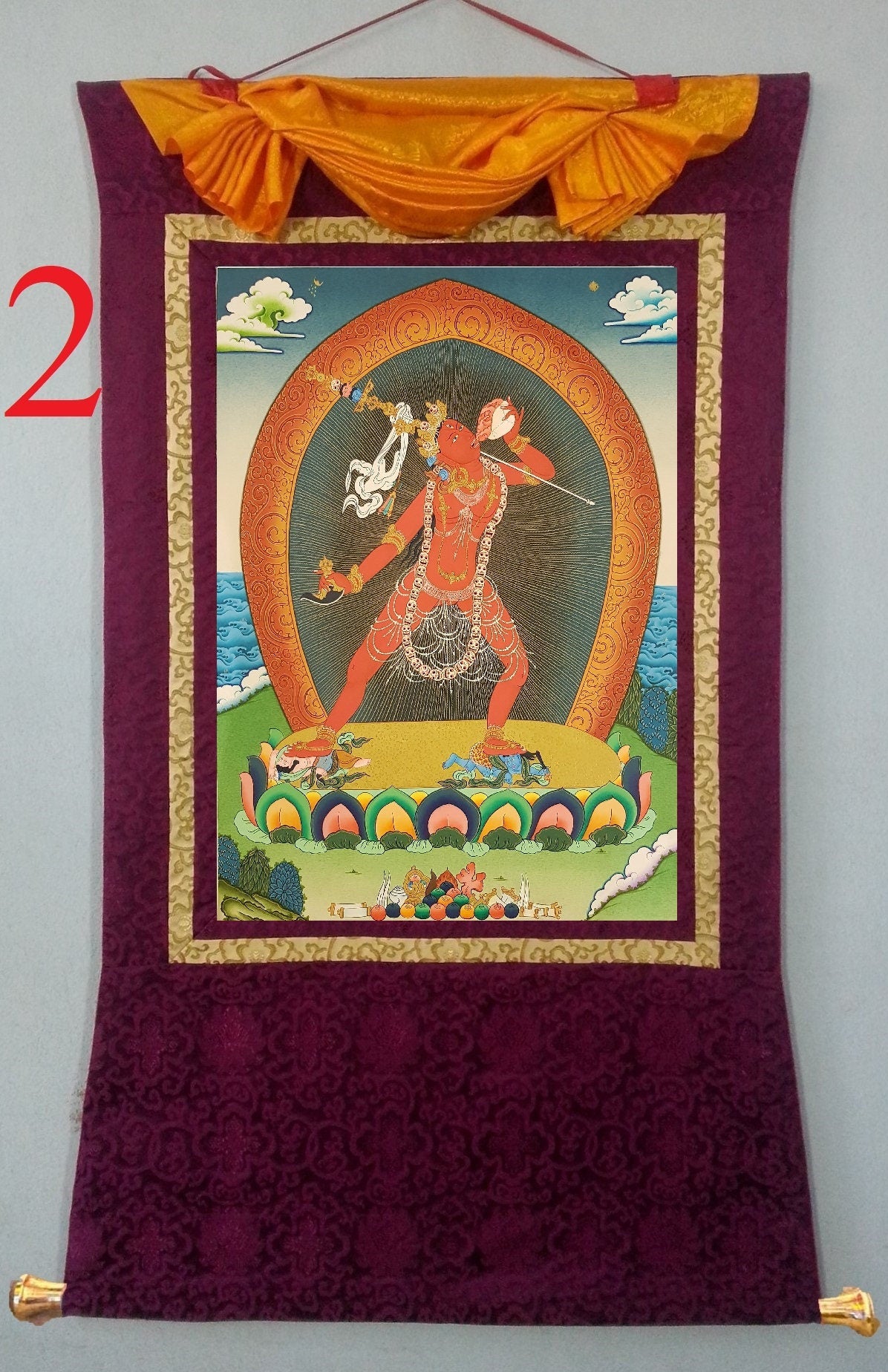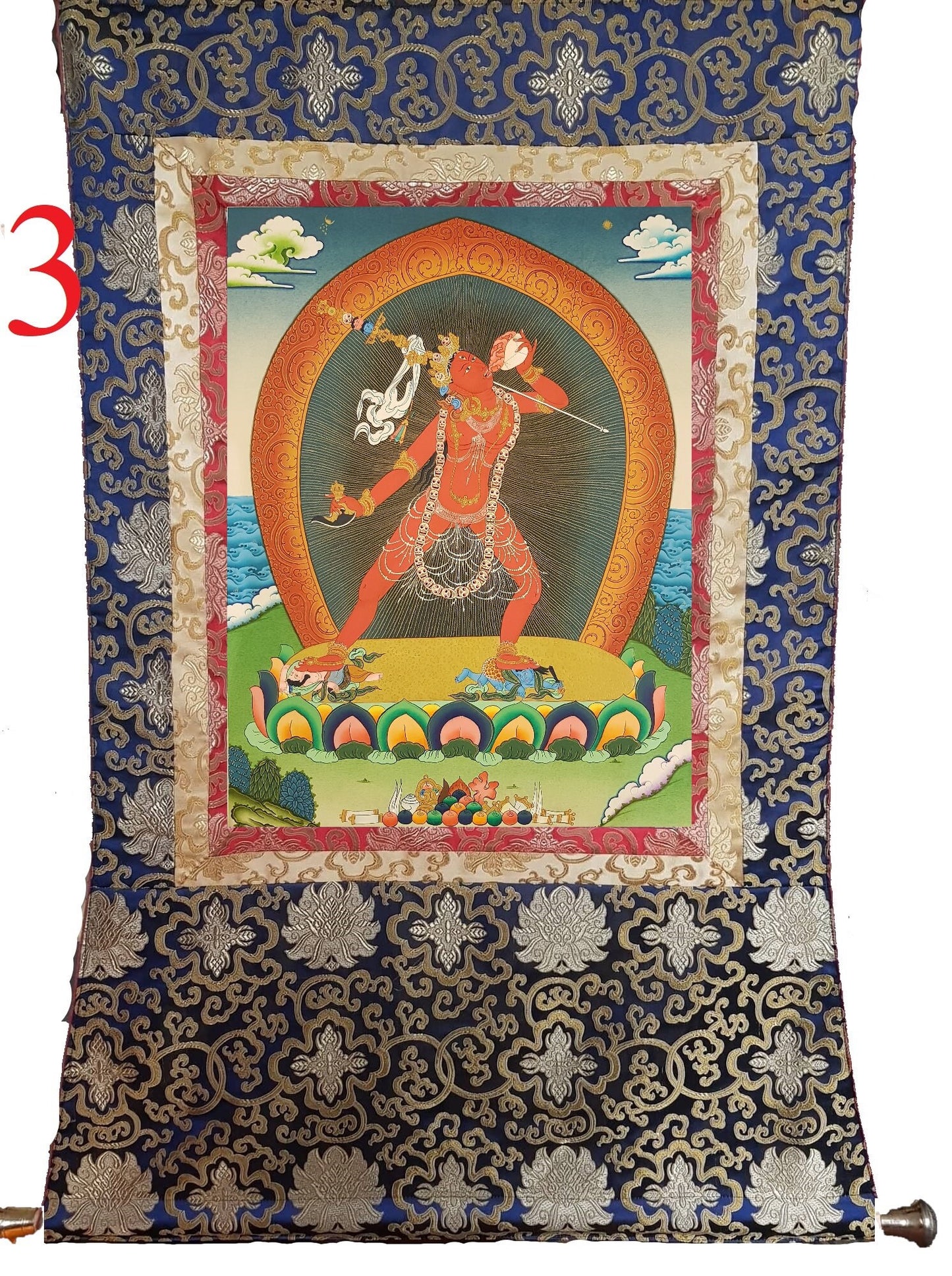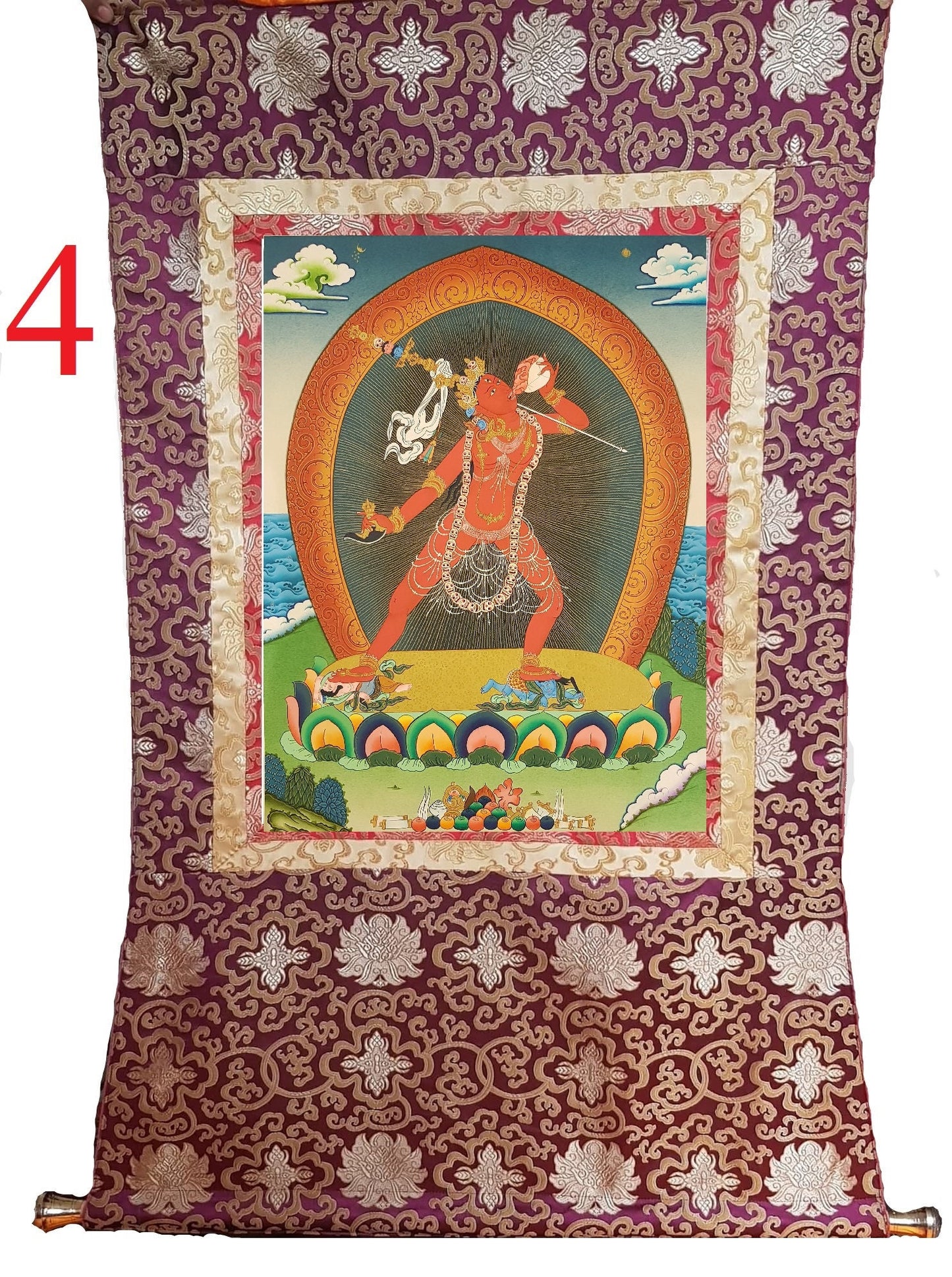1
/
of
7
My Store
141. Vajrayogini Thangka (Thanka). Free Brocade / Free Shipping.
141. Vajrayogini Thangka (Thanka). Free Brocade / Free Shipping.
Regular price
$365.00 USD
Regular price
Sale price
$365.00 USD
Quantity
Couldn't load pickup availability
Vajrayogini Practice
Vajrayogini’s sadhana (spiritual practice) originated in India between the tenth and twelfth centuries and was followed by both Hindu and Buddhist practitioners. Tantrism itself is a method of psychospiritual advancement that was developed in India before the purported arrival of Indo-Europeans over three thousand years ago. With the pressures that were brought to bear on Indian religious life by the eighth-century Central Asian invaders, Tantric systems were maintained in the south of the subcontinent and also in Bengal, where they formed an important aspect of goddess worship in India. Those Indian (and later, Tantric Buddhist) traditions have preserved these systems and the iconography of the goddess since ancient times, but it is not exactly known how old they are. Despite the similarities between Hindu Tantrism and Vajrayana (or Tantric, or Tibetan) Buddhism, there are also some fundamental differences. The purpose of Vajrayana Buddhist practice is to attain the perfect enlightenment of Buddha, whereas in the Hindu Tantric system, the basis is realizing the ten Mahavidyas, or aspects of Devi, as the highest forms of deities.
Vajrayogini is inarguably the supreme deity of the Tantric Buddhist pantheon, and even Her divine consort, Heruka-Cakrasamvara (often depicted as a spear on the goddess’s shoulder) doesn’t come close to approaching Vajrayogini’s metaphysical and iconographic importance. She has no other counterpart in Buddhism, and is a wild spirit who dances ecstatically in the sky of sunyata, or the great emptiness that underlies all phenomena. The similarities between Vajrayogini and Kali are so obvious that many scholars suspect they are only slight variations of the Great Mother of Hinduism. Typically, Vajrayogini is blood-red in color, naked except for elaborate ornaments of human bone and a necklace of skulls (corresponding to the 16 vowels and 35 consonants of the Sanskrit alphabet). In Her right hand, She holds a flaying knife used to cut off attachments, and in Her left She carries a skull cup filled with mahasukha (the great bliss), which She pours out like wine to Her devotees. Perhaps another aspect that links Her to Kali is the fact that both goddesses are depicted as two of the ten Mahavidyas. Among the Mahavidyas, Kali, Tara, and Chinnamasta have the most significance, especially in Tantric practice. In Buddhism, Vajrayogini is essentially the same entity as Chinnamasta (also known as Krodha Kali), and both goddesses appear in severed-head forms and other identical imagery.
Size:
Size without Brocade: 15 inches by 20 inches
Shipping:
We ship within 2 business day.
DHL Shipping: 5 to 8 business days with tracking number.
Insurance against loss.
We do wholesale too.
Our one and only priority in this business is to provide "Hassle free Customer Satisfaction". We have "Quality Products" with "Cheapest Price" in the market.
Please contact us to resolve any issues. Contact us via email before leaving any negative or neutral comments. We promise you that we will resolve any issues.
Please confirm the return address with us before returning the product.
Share
